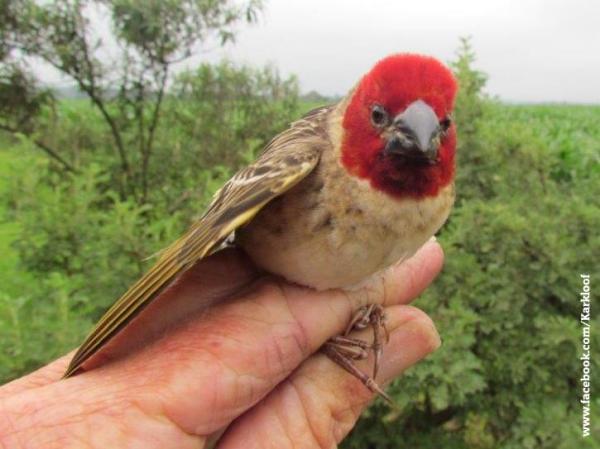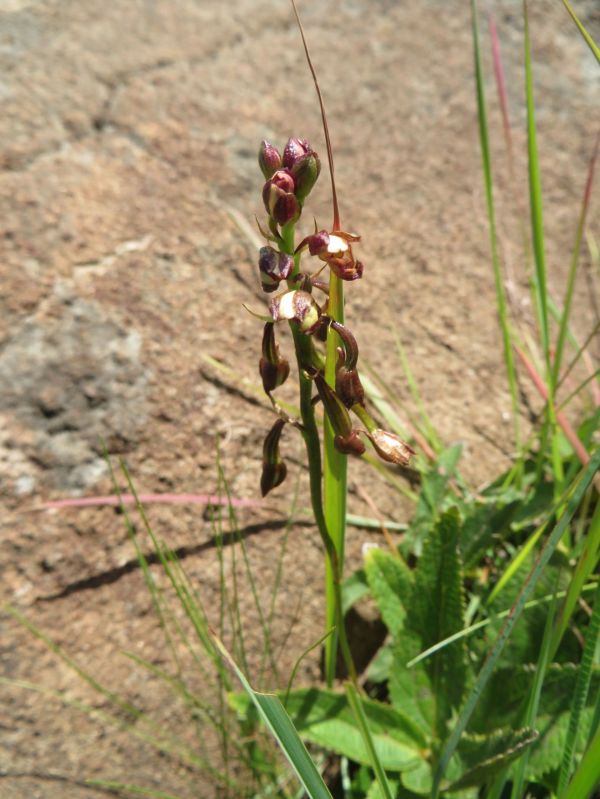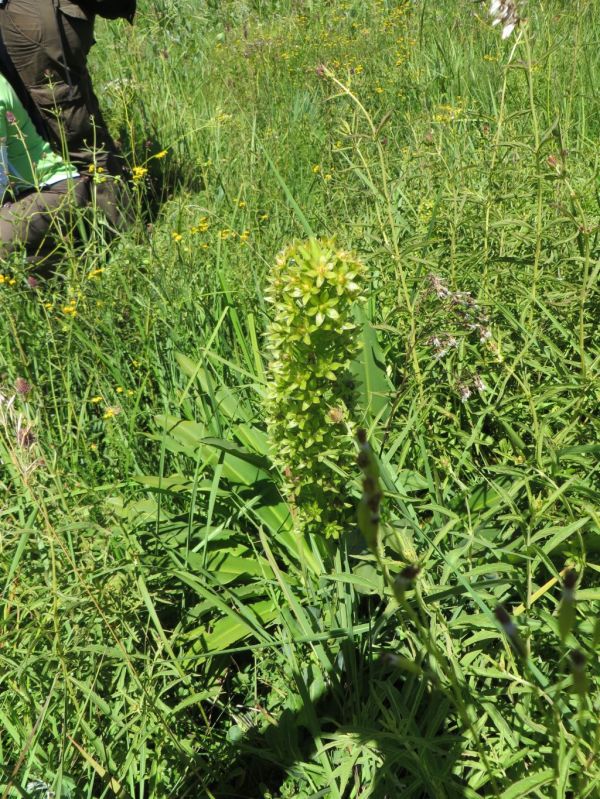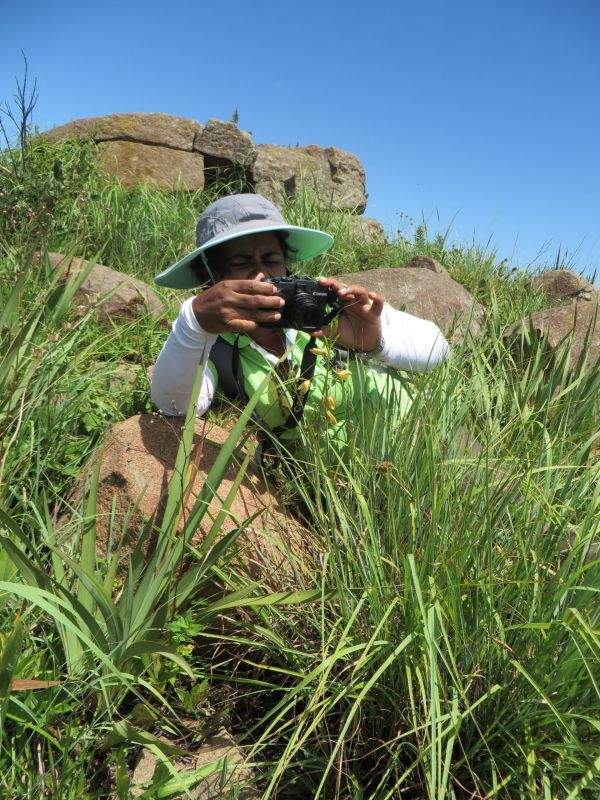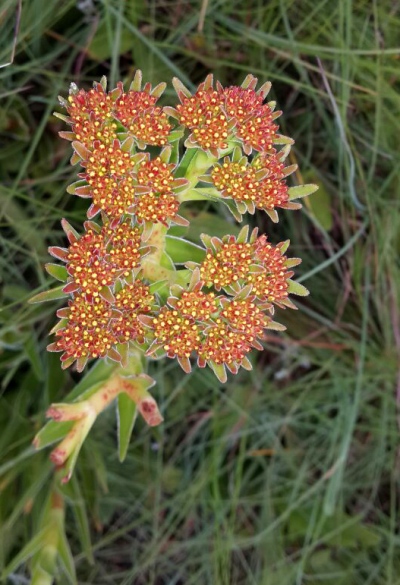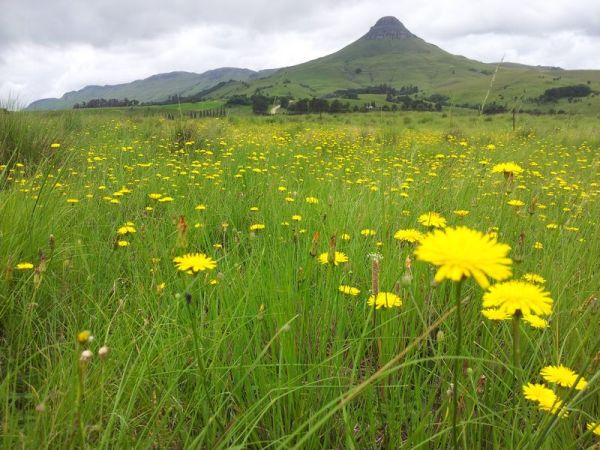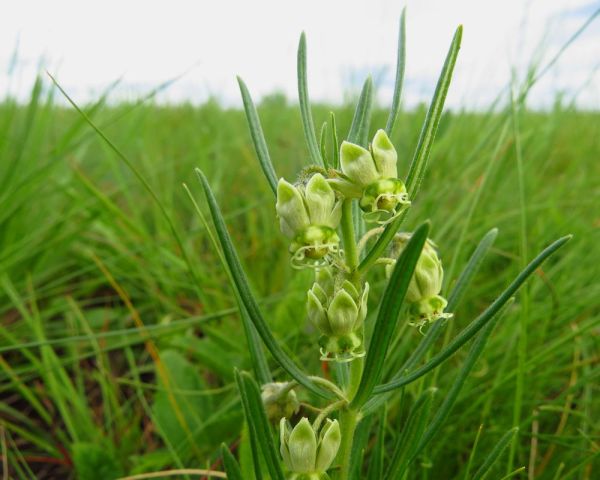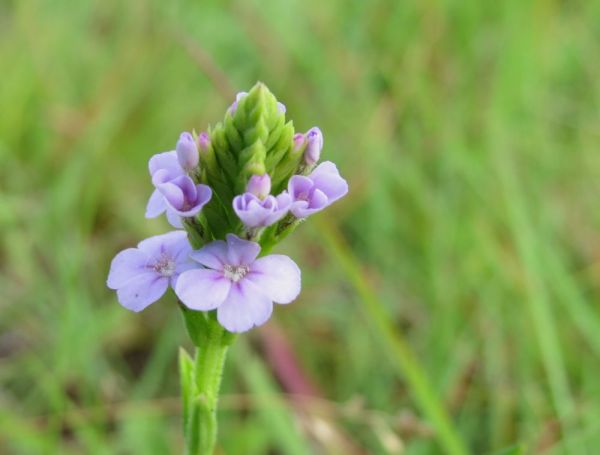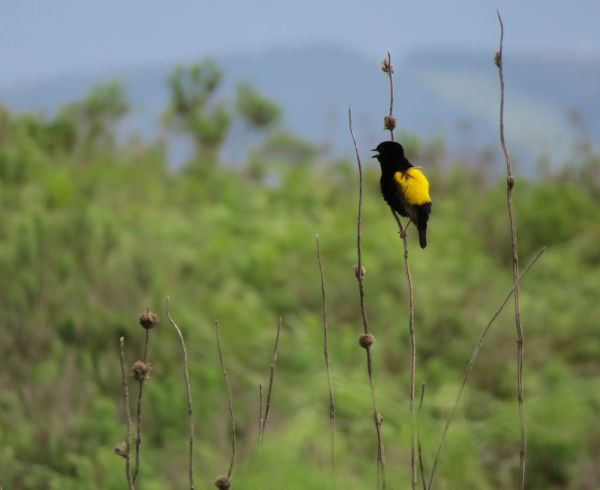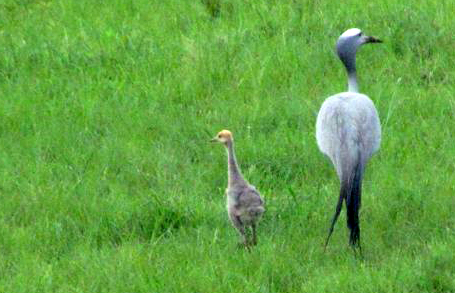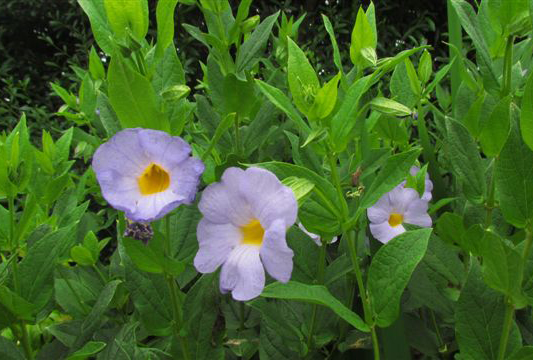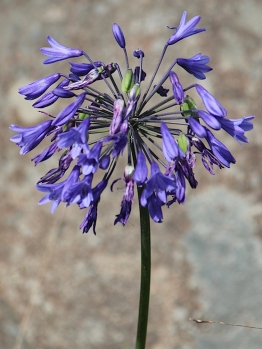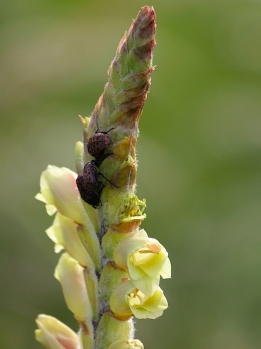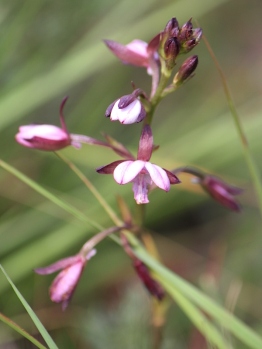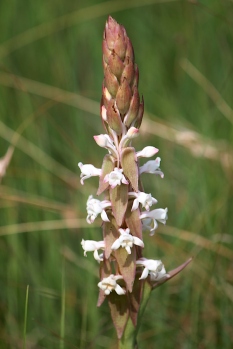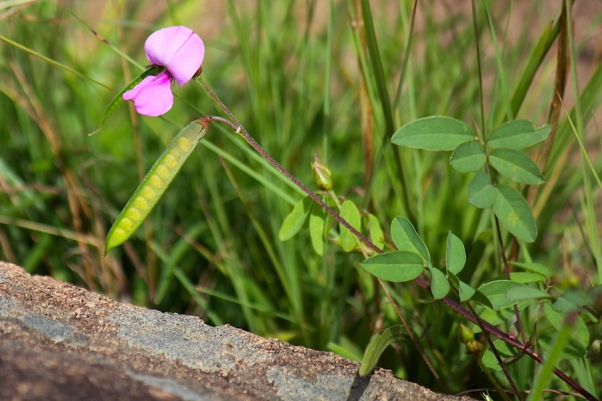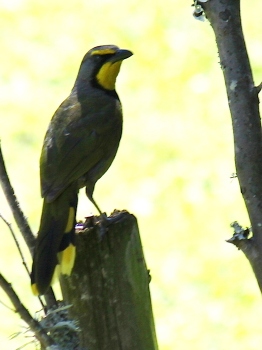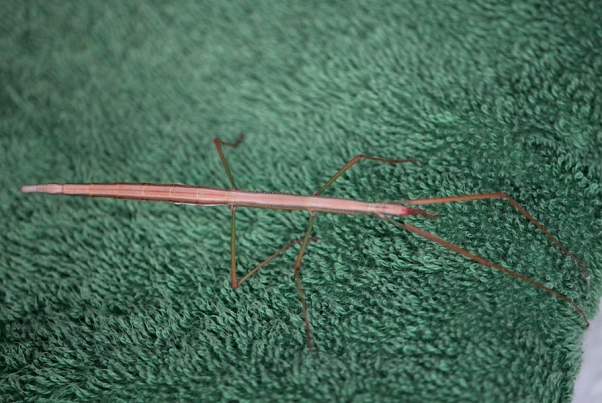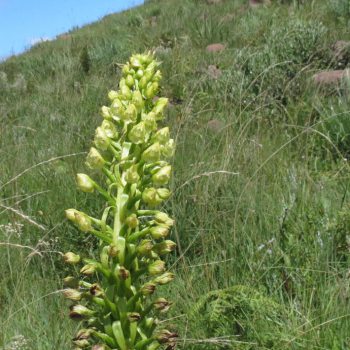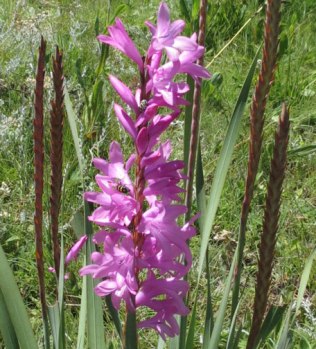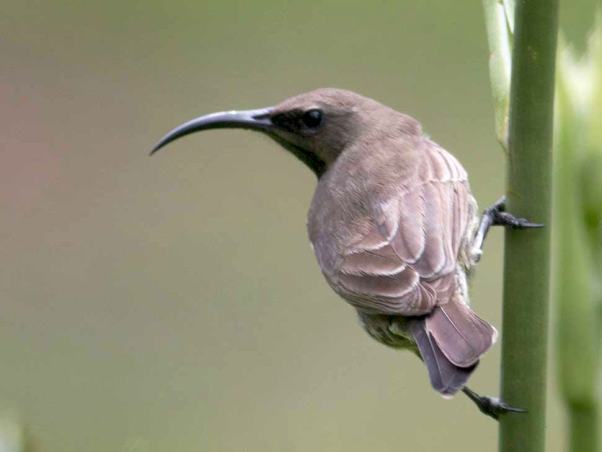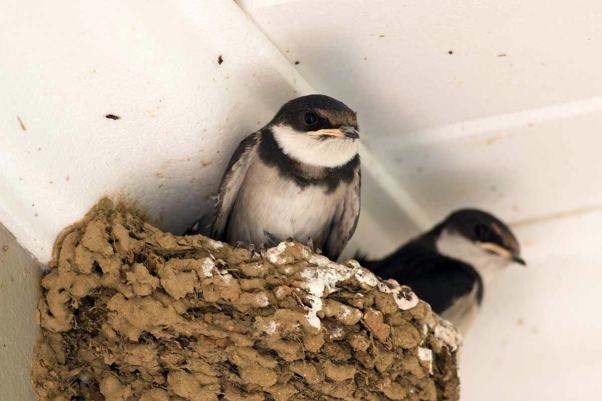I apologise for the delay in issuing this edition, I had a short break down the South Coast. We have a real pot pourri (or should I say an Irish Stew!) this month, with flowers, birds and a toad.
Karkloof Conservation Centre – Patrick Cahill
For several years after the Karkloof Conservation Centre opened I had the mutters because I had only once seen a Giant Kingfisher and when I did it was so camera shy I couldn’t get a good picture. Last month a much braver bird put in an appearance and gave me the chance to take too many shots – that’s the problem with digital photography!
Twané had some great sightings in January. She managed to get a photograph of a Common Sandpiper that was a regular visitor to the distant muddy shore of the Gartmore pan.
Twané was lucky to get this shot of a male Diderick Cuckoo feeding a female – the way to a woman’s heart is through her stomach. The male fed her 3 juicy caterpillars and offered them to her with a gentle bobbing motion. They flew off into the sunset after the third one.
The butterfly that is photographed looks like it could be a male Window Acrea (Acrea oncaea). We would appreciate the correct ID from any Lepidopterists that might have a better idea of what it is.
On a recent frogging expedition by the EKZNW Kids Club, the kids found plenty of these little Painted Reed Frogs in the wetlands and mealies.
We have often had queries from visitors about the effect of the centre pivots used by local farmers for irrigating crops on the wildlife in the area and particularly on the cranes. The pictures of the Wattled Cranes and the Grey Crowned Cranes taken this month show that they do not impact the local fauna negatively. They act as excellent perches for raptors while they keep the rodent population under control. Centre pivots are also an extremely water efficient method of irrigation.
Denleigh – Ren and Britt Stubbs
We received some exciting news from Britt about a pair of African Grass-Owls that are nesting in their grassland. They have seen a pair hang around before, but have finally confirmed that they have decided to breed on their farm. They have reported this sighting to Ezemvelo KZN Wildlife who keep an active record of nest sites of various species.
According to the Endangered Wildlife Trust, the African Grass-Owl (Tyto capensis) is a habitat specialist and is mainly restricted to the open, grassy habitats of marshes, wetlands and floodplains. It is estimated that there are less than 5000 of these birds left in southern Africa.
The need for farmer co-operation centred on grazing densities and burning regimes, as well as alien plant control and no longer ploughing up native grassland areas no matter how small is extremely important.
Well done Ren and Britt on a fantastic sighting and for taking on the role as custodians of your land.
Gartmore Farm – Charlie and Robyn MacGillivray
Charlie and Robyn were very excited about this pair of Lesser Striped Swallows that decided to build a nest outside their kitchen window.
During Robyn’s monthly walk, we found a few of these beautiful Asclepias albens (Cartwheel) flowers which seemed to be a favourite amongst the group.
Karkloof Roadside – Sears from Hillcrest
Geoff and Iris Sear from Hillcrest recently drove through the Karkloof Valley and sent us the following interesting sightings.
We passed by on our way to Rietvlei a few weeks ago when we were in search of the Forest Buzzard, which we saw just past the New Hanover turn off. We couldn’t get a good photo sadly. We also saw 9 pairs of Grey Crowned Cranes in the farmlands before we passed by your centre. There were also plenty of White Storks.
Mbona Private Nature Reserve – Richard Booth
Richard Booth from Mbona is a regular contributor and avid photographer. He sent us a picture of a Red-winged Francolin which had read about Chicken Licken’s phobia about the sky falling on her head and was keeping a weather eye on the stratosphere just in case.
Having gone through medical school, Richard doesn’t believe the ridiculous myth about frogs giving you warts, and he bravely photographed this Guttural Toad!
The Brunsvigia undulata, a rare threatened species, was found on Mbona and is a cousin to the more widely spread Brunsvigia radulosa or Candelabra flower.
Ringing at Gartmore Hide – Karin Nelson
Error correction: In the December 2014 Karkloof Sightings newsletter, we had incorrectly labelled this gorgeous Red-headed Quelea (photographed) as a “Red-headed Weaver”. Many thanks to Pam Nicol for pointing this out for us. We, Karin, Pat and Twané, will all need to go for an eye test!
Karin Nelson’s January ringing session produced 33 birds, with 8 re-trapped birds all ringed within the past 2 years, mostly African Reed-Warblers (7). Karin read up on the Reed-Warblers and found that they spend their non-breeding time in drier vegetation, away from water. Some birds further north than KZN do move south.
At first glance, we had assumed one of the birds to be a Bronze Mannikin, however, it was too big and Karin had noticed a prominent gape. It turned out to be a ‘baby’ Pin-tailed Whydah. It was very interesting to see how similar it looked to the Mannikin.
Other birds ringed included:
- 14 x African Reed-Warbler
- 6 x Southern Red Bishop
- 3 x Pin-tailed Whydah
- 3 x Cape Weaver
- 2 x Fan-tailed Widowbirds
- 2 x Amethyst Sunbird.
- 1 x Barn Swallow
- 1 x Levaillant’s Cisticola
- 1 x Southern Grey-headed Sparrow














